38 Eastway, Maghull, Liverpool, Merseyside, L31 6BR
Quarry Brook is one of Maghull’s best-known buildings. Built in the early 20th century, it was the home of the toy manufacturer Frank Hornby (marked by an English Heritage plaque) and is now a convent. Hornby was born in Maghull in 1863. He began making toys for his sons, in 1899, and subsequently produced some of the most popular toys of the 20th century: Meccano, Hornby Model Railways and Dinky Toys. Hornby died in Maghull in 1936 and is buried in the grounds of St Andrew’s Church.
Photographs of the Hornby’s.
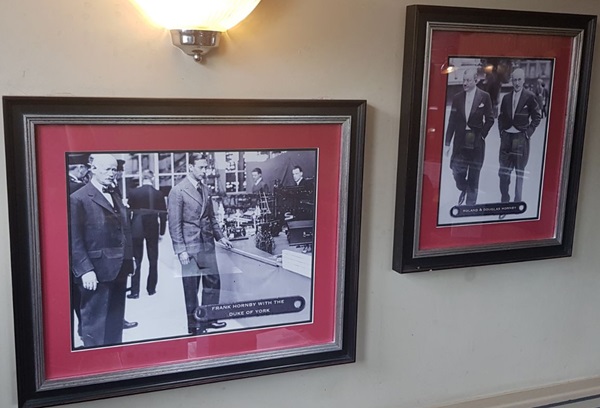
Left: Frank Hornby with the Duke of York
Right: Roland & Douglas Hornby
A copy of Frank Hornby’s Book of Trains, 1934-5.
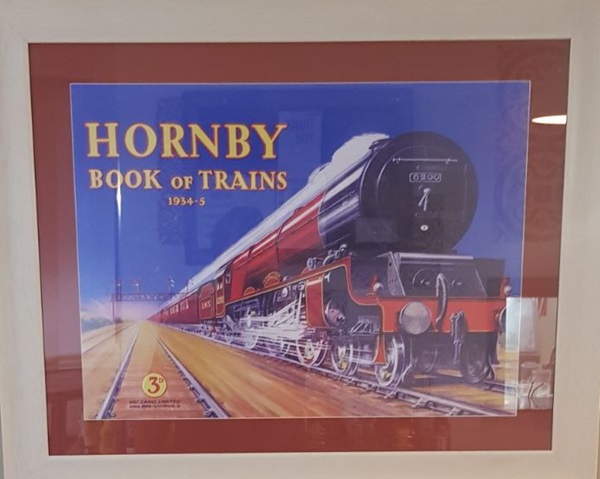
A collection of Hornby Model Railway trains.
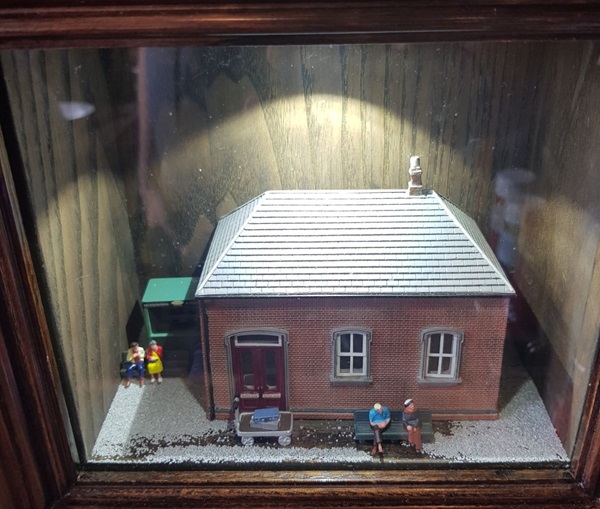
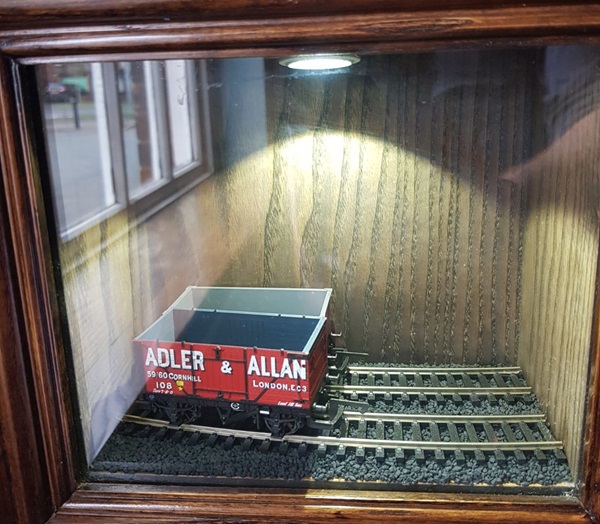
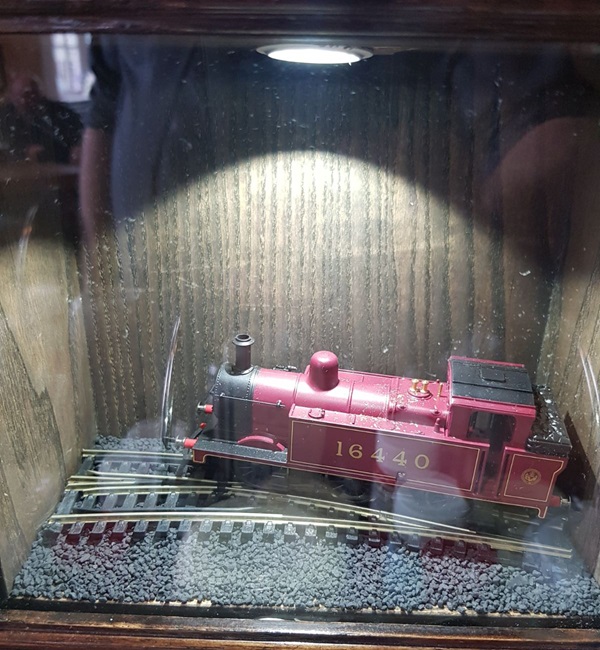
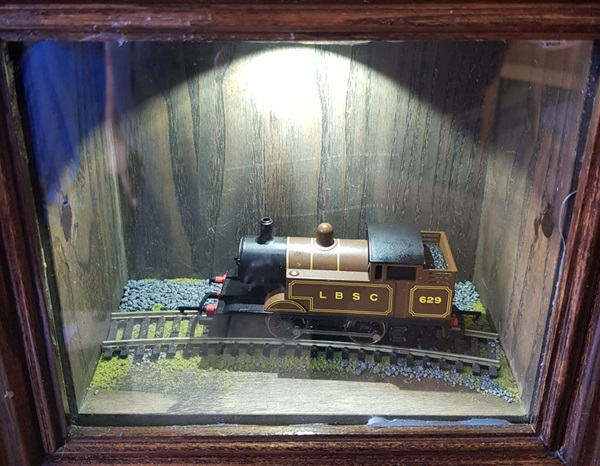
Photographs and text about Tenzing Norgay and Edmund Hillary.
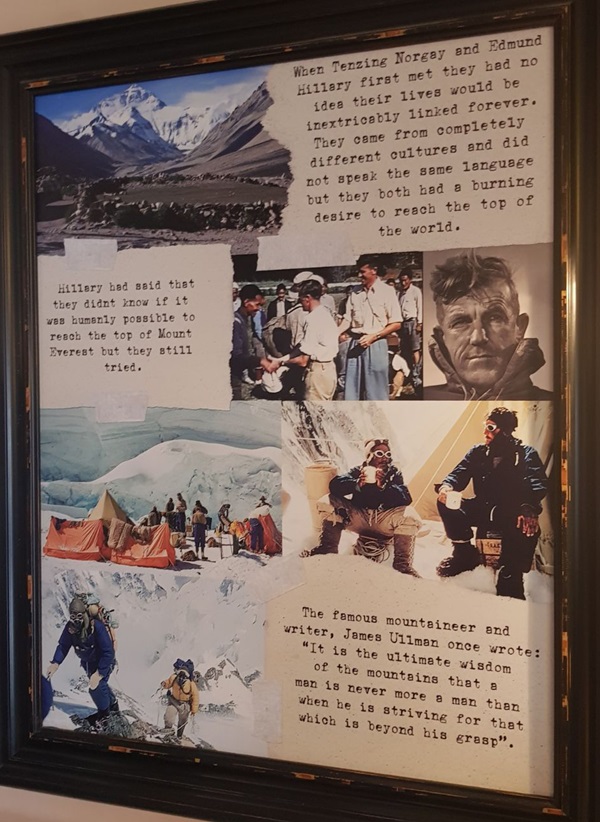
The text reads: When Tenzing Norgay and Edmund Hillary first met they had no idea their lives would be inextricably linked forever. They came from completely different cultures and did not speak the same language but they both had a burning desire to reach the top of the world.
Hillary had said that they didn’t know if it was humanely possible to reach the top of Mount Everest but they still tried.
The famous mountaineer and writer, James Ullman once wrote: “It is the ultimate wisdom of the mountains that a man is never more a man than when he is striving for that which is beyond his grasp”.
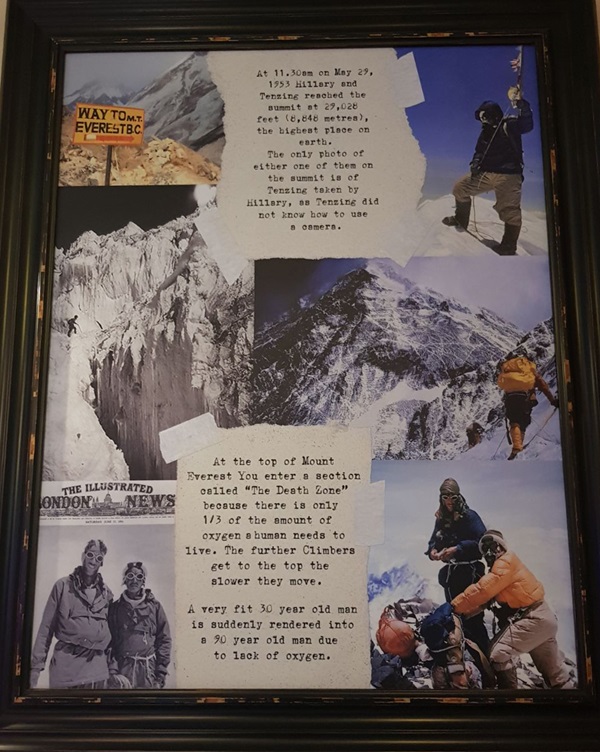
The text reads: At 11.30am on May 29, 1953, Hillary and Tenzing reached the summit at 29,028 feet (8,848 metres), the highest place on earth.
The only photo of either one of them on the summit is of Tenzing taken by Hillary, as Tenzing did not know how to use a camera.
At the top of Mount Everest you enter a section called “The Death Zone” because there is only 1/3 of the amount of oxygen a human needs to live. The further climbers get to the top the slower they move.
A very fit 30 year old man is suddenly rendered into a 90 year old man due to a lack of oxygen.
Text about the Everest Hotel.
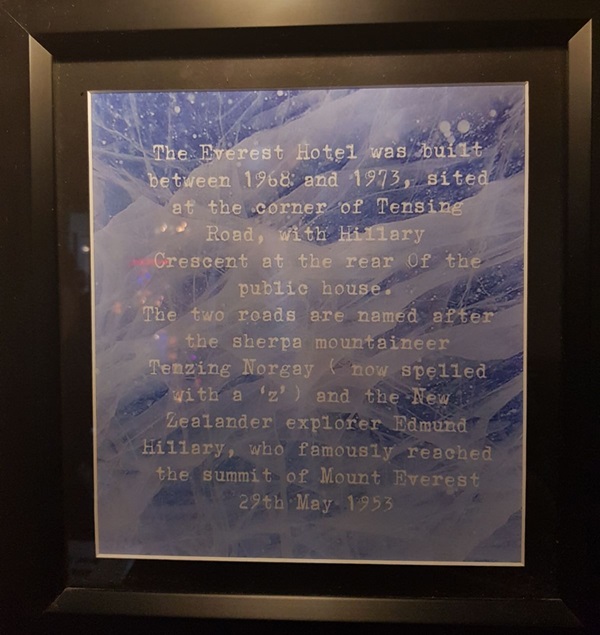
The text reads: The Everest Hotel was built between 1968 and 1973, sited at the corner of Tensing Road, with Hillary Crescent at the rear of the public house. The two roads are named after the sherpa mountaineer Tenzing Norgay (now spelled with a z) and the New Zealander explorer Edmund Hillary, who famously reached the summit of Mount Everest on 29 May 1953.
Photographs and text about Rafael Sabatini.
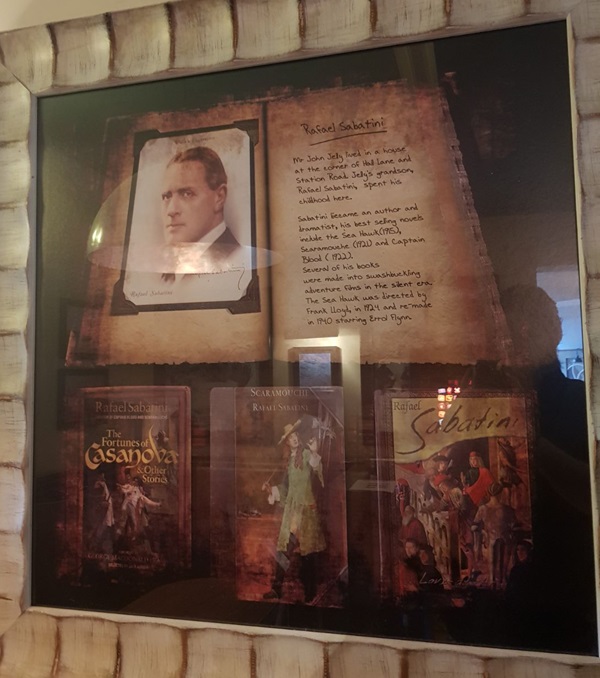
The text reads: Mr John Jelly lived in a house at the corner of Hall Lane and Station Road. Jelly’s grandson, Rafael Sabatini, spent his childhood here.
Sabatini became an author and dramatist, his best-selling novels include the Sea Hawk (1915), Scaramouche (1921) and Captain Blood (1922).
Several of his books were made into swashbuckling adventure films in the silent era. The Sea Hawk was directed by Frank Lloyd, in 1924 and re-made in 1940 starring Errol Flynn.
External photograph of the building – main entrance.

Extract from Wetherspoon News Spring 2019.
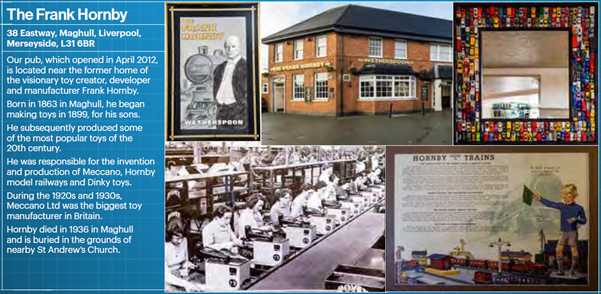
If you have information on the history of this pub, then we’d like you to share it with us. Please e-mail all information to: pubhistories@jdwetherspoon.co.uk